Kurabiye: Middle Eastern flower cookies that became truly Soviet (RECIPE)
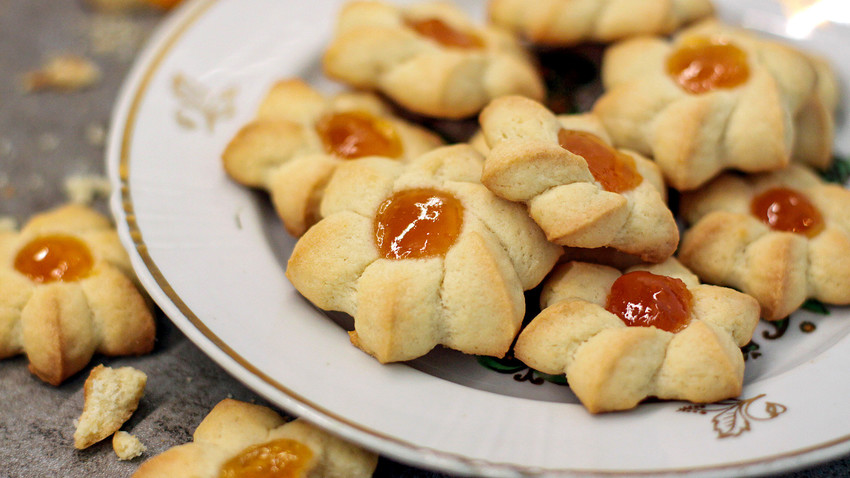
A popular legend says that the recipe for kurabiye cookies was developed by a servant of a Persian sultan long ago in the ancient Near East – so the name “kurabiye” probably derives from either a Turkic or Arabic word meaning “exotic cookie”. There are many variations of kurabiye cookies as far as the shape, but the flower one must be the most iconic. Authentic eastern kurabiye was a kind of expensive treat – it was made from pastry that had lots of spices such as cinnamon, cloves, natural vanilla and saffron. To make the production cheaper, Soviet confectioners removed the costly ingredients and added cheap vanilla sugar to give a richer taste. The pastry became so popular that confectioners developed a state standard recipe – GOST – and gave the cookies the name “Baku kurabiye,” because the ingredients and the shape were the closest to the traditional Azerbaijan recipe.
Today, kurabiye is sold in many bakeries and literally every single grocery shop in Russia. Still, many love baking it at home, and it is actually one of the fastest-made cookies recipes: you only need a few basic ingredients to make your shortcrust pastry and some fruit or berry jam for the filling.
Ingredients:
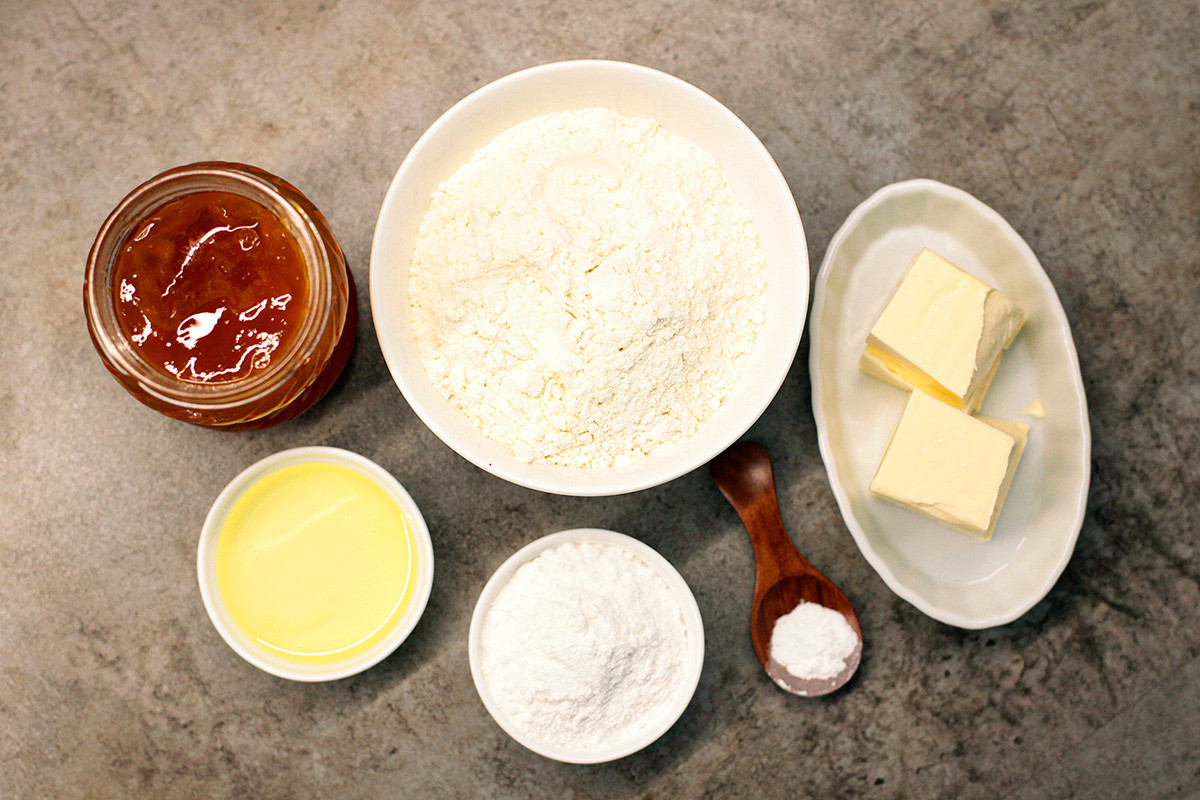
- 140 g plain flour
- 40 g powdered sugar
- 1 egg white
- 90 g butter
- 1 tsp vanilla sugar / extract
- 1/3 tsp baking powder
- a pinch of salt
- + 3 tbsps any fruit or berry jam for filling
Cooking:
1. Using a hand or a stand mixer, in a large bowl whisk softened butter with powdered sugar, vanilla sugar or extract, and a pinch of salt until it gets soft and smooth.
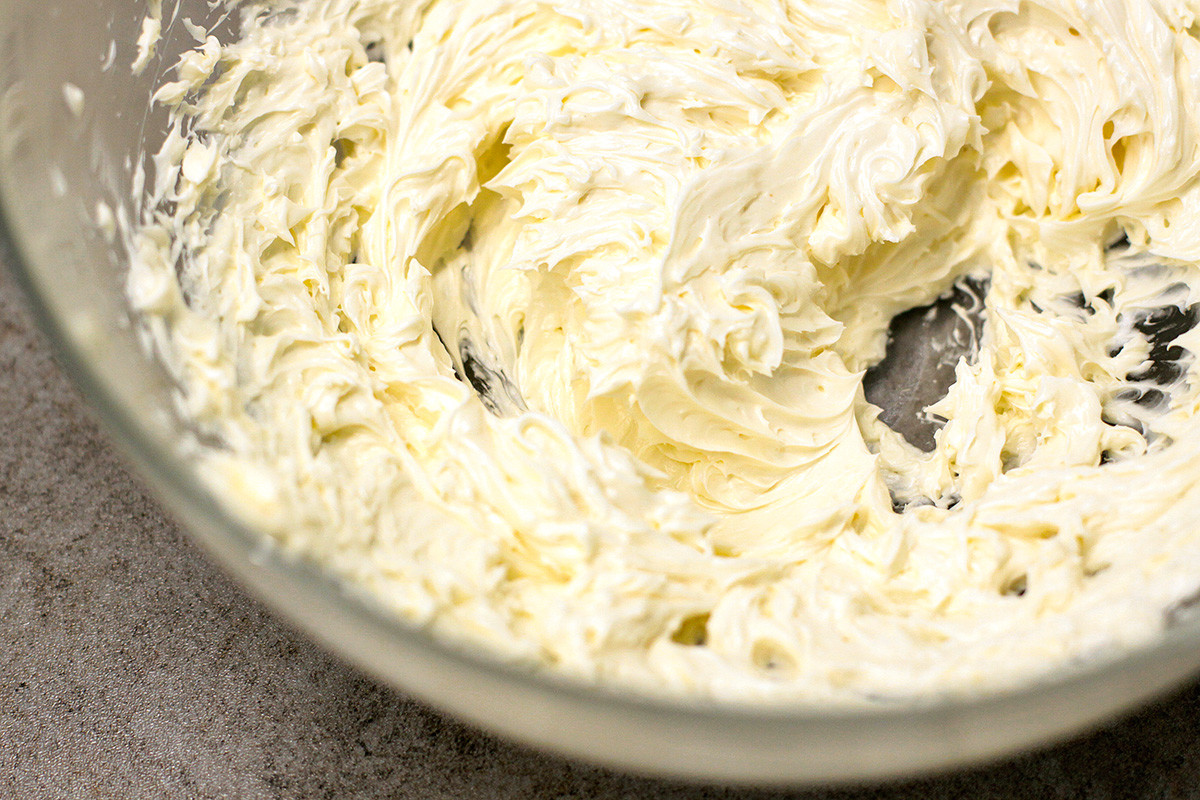
2. Next, add an egg white and whisk on high speed for around 3-5 minutes – you should get a well-whipped airy mixture.
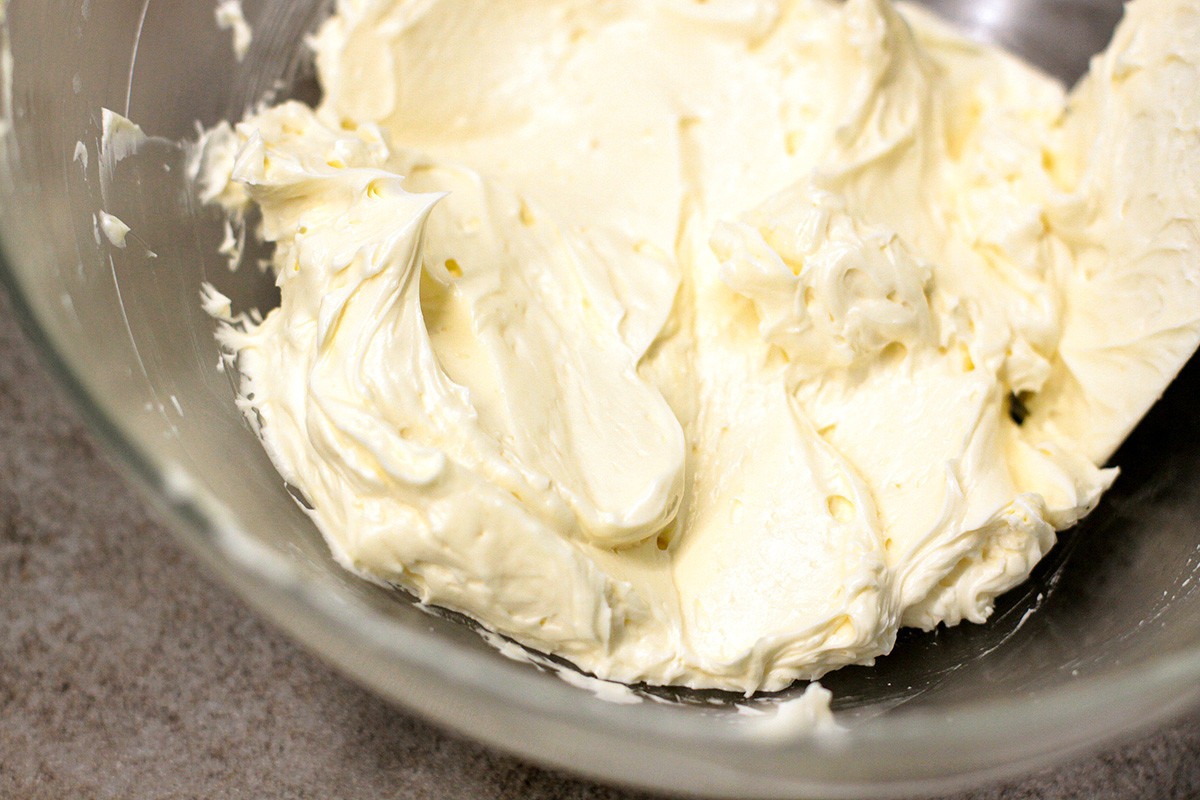
3. Then, add sifted flour with baking powder and knead a nice paste-like shortcrust pastry: it should be quite malleable and not too stiff so that you can put it with a piping bag. If you feel that the pastry is too thick for piping, add a tablespoon of milk and mix until smoother consistency.

4. Transfer the pastry into a piping bag with a “star” or “flower” nozzle and start piping cookies on a baking tray covered with a sheet of parchment. Make a small hollow in the center of each cookie with a finger.
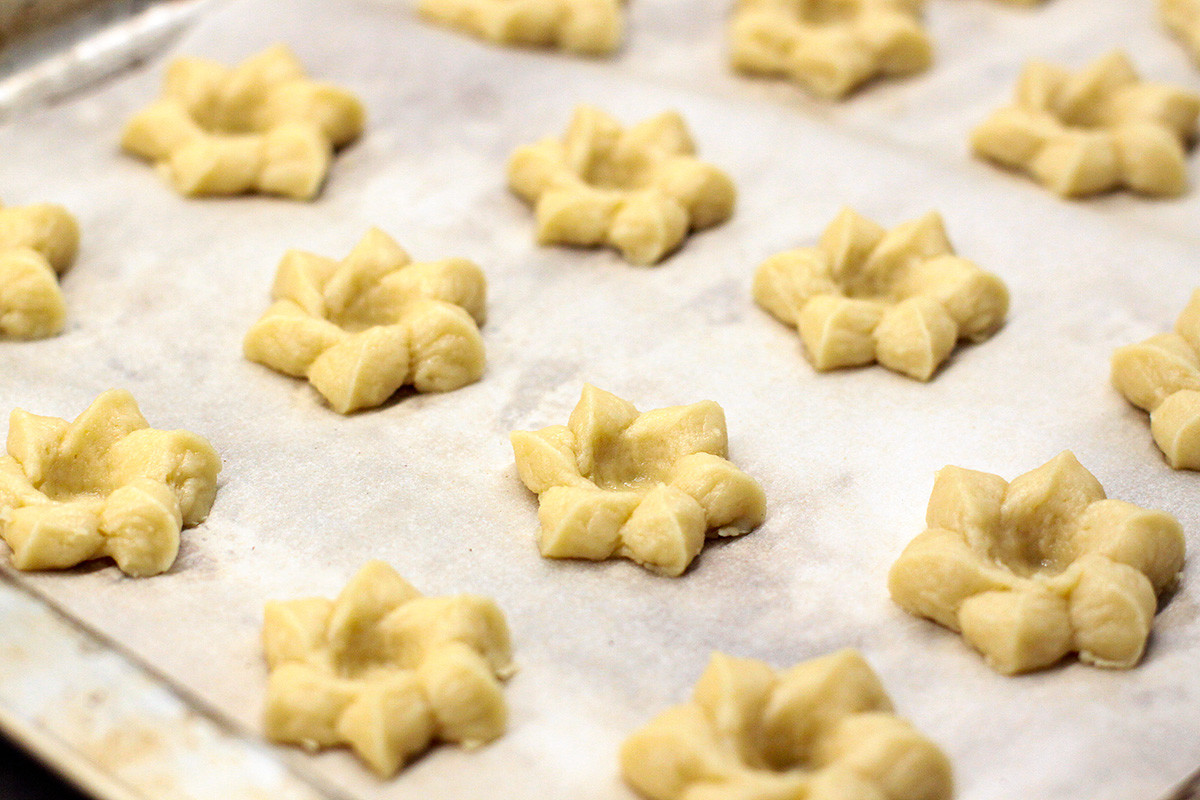
5. For the filling use any thick jam, caramel or dulce de leche – for my kurabiye cookies I add apricot jam. Transfer the filling into a piping bag and fill the hollows to half full – the rest of the filling we’ll add after baking.

6. Bake at 220°C for 10-12 minutes. Make sure not to overdry the cookies, so take them out of the oven when you notice that the edges of the “flowers” become slightly golden-brown.
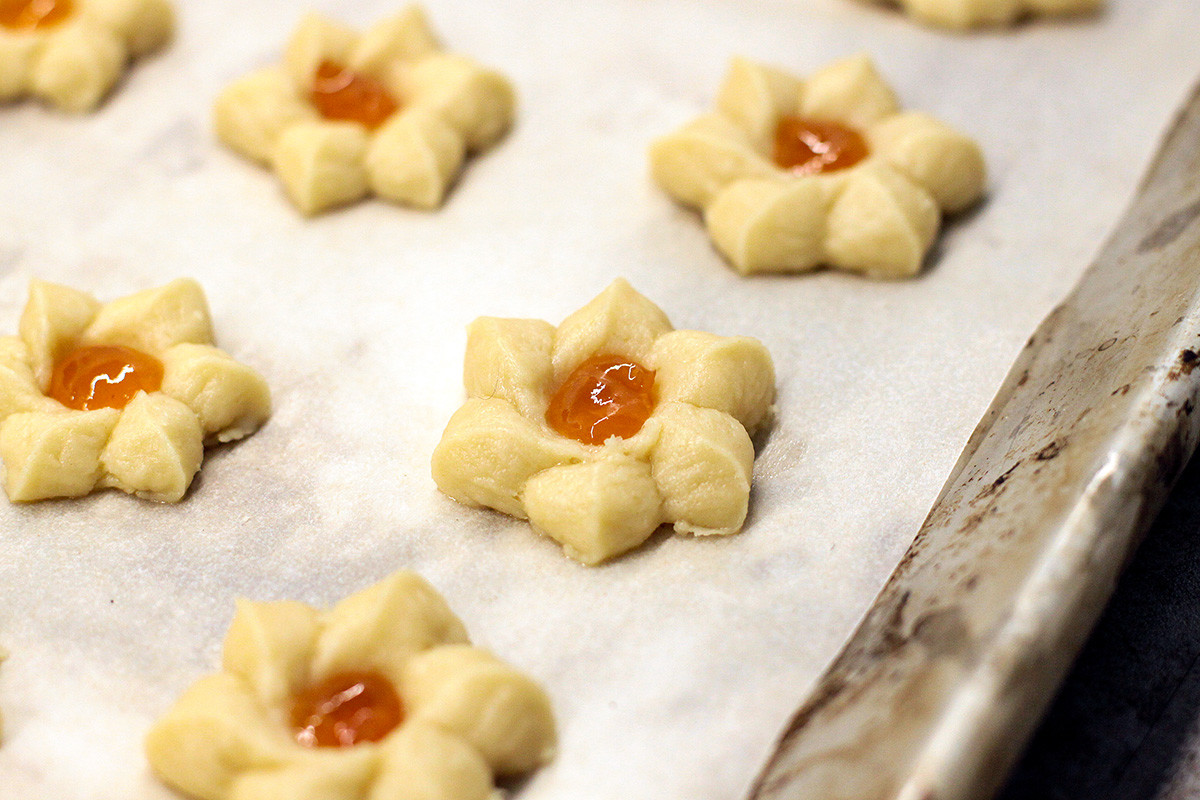
7. While kurabiye is still hot, fill the hollows with the rest of jam and let the cookies cool down completely before eating. Priyatnogo appetita!
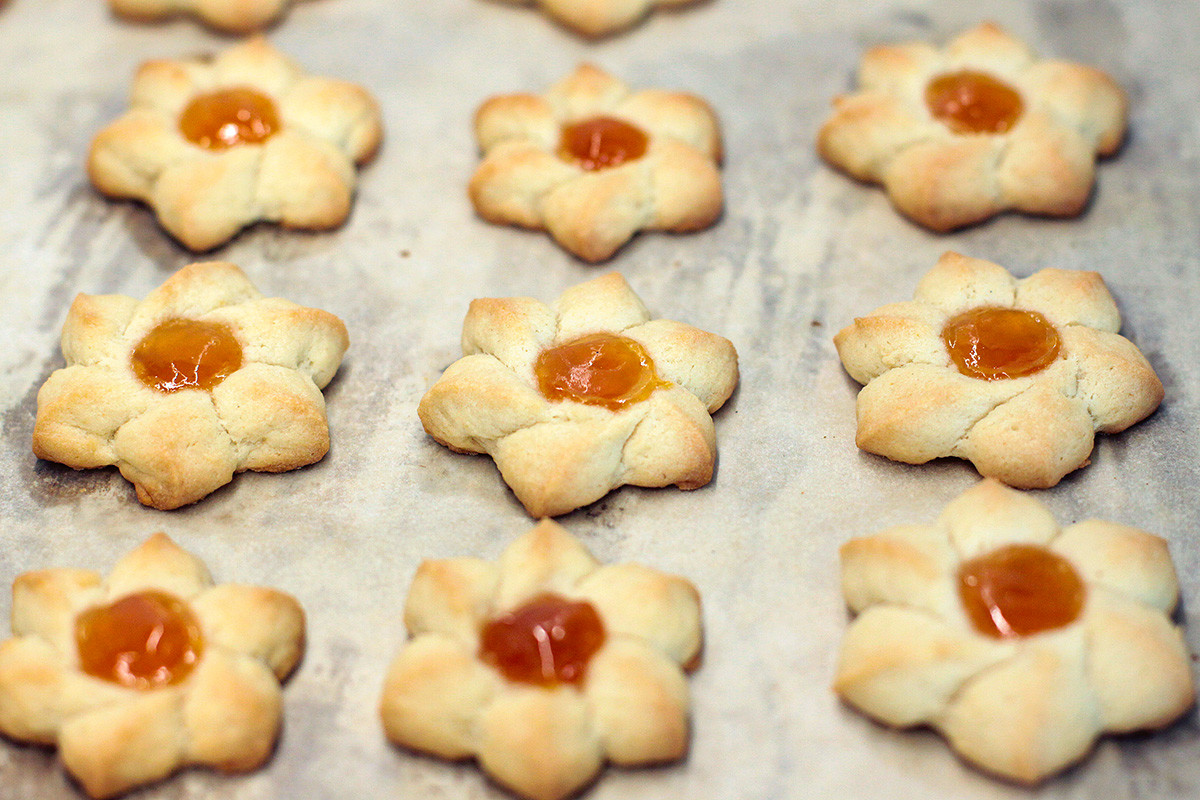
READ MORE: Sochnik: the symbol of Soviet school canteens or cheesecake a-la russe
If using any of Russia Beyond's content, partly or in full, always provide an active hyperlink to the original material.
Subscribe
to our newsletter!
Get the week's best stories straight to your inbox